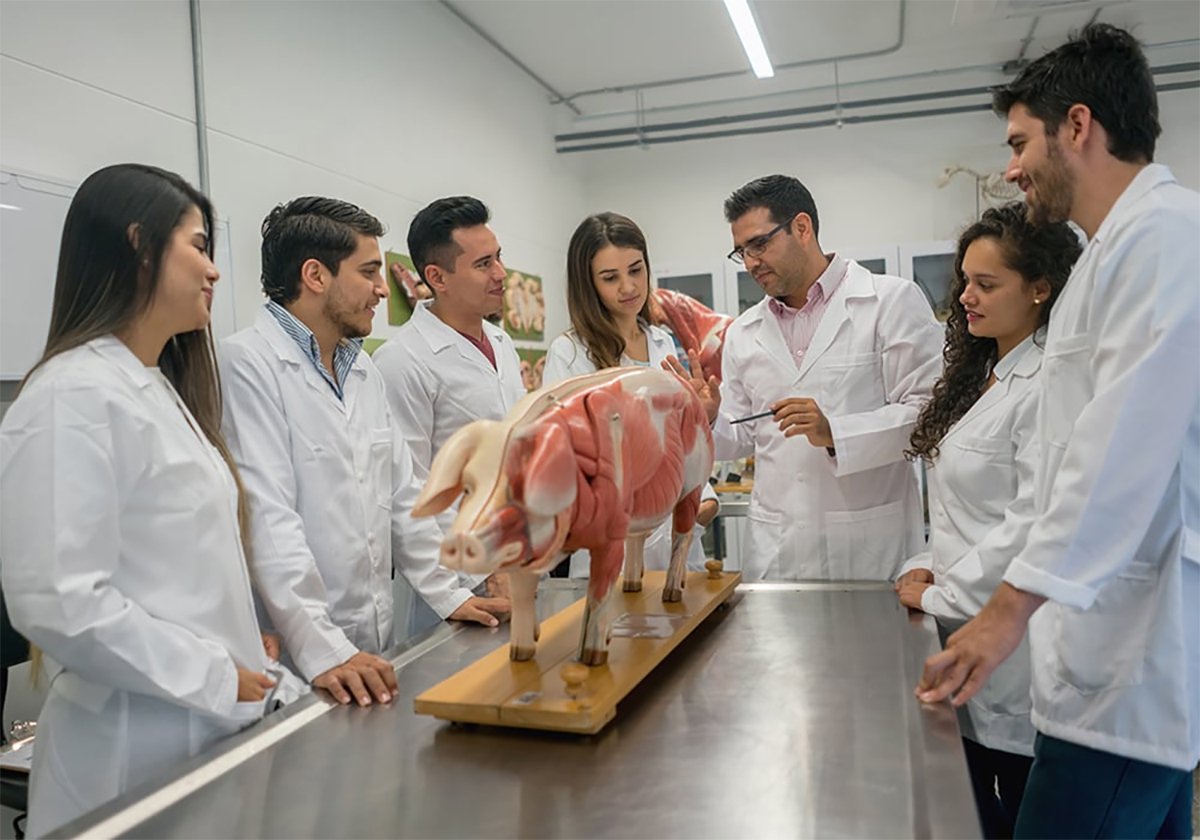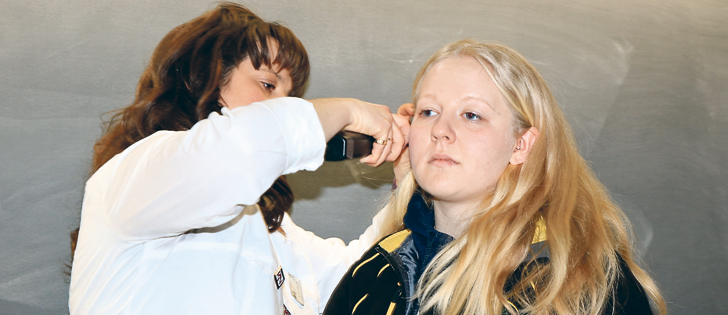Ringing in your ears after a day in the tractor is a sign that you’ve already suffered hearing damage.
During an Invest in Your Health program in Saskatoon March 1, University of Saskatchewan agriculture college students were offered head to toe personal protective equipment from the AgriSafe Network.
The presentation helps people identify their exposures in agriculture and access gear such as ear plugs, disposable coveralls, face masks and safety glasses to reduce their risks on the farm and in their jobs.
Students also received hearing tests, were fitted with two strap respirators and had their blood pressure and body mass index checked.
Read Also

Students urged to consider veterinary medicine
Alberta government makes $86.5 million investment in University of Calgary to double capacity for its veterinary medicine program to address labour shortages in the field.
“You have many opportunities for exposures that others don’t have in other operations and occupations,” said Carolyn Sheridan of the U.S.-based network.
“You are the next generation of farmers in agriculture and a way to change the statistics.… We don’t want you to become one of those stories.”
Sheridan said farm studies have shown that many children start helping as preschoolers with most actively feeding livestock stock or running machines by age 14.
“In no other industry do people start helping at such a young age,” she said. “You are an important part of the workforce.”
She, with network co-worker David Sullivan and Kendra Ulmer of the Canadian Centre for Health and Safety in Agriculture, offered students tips to reduce the risks in farming.
They say few regularly use ear protection but should.
“If you need to shout to talk to someone only three feet away, it’s an indication you should be wearing protection,” said Ulmer.
She demonstrated how to properly insert the common spongy ear plugs by pulling up on the upper ear, inserting and holding it in place for three seconds to allow it to expand.
“A good fit is most important,” Ulmer said, citing the variety of shapes and sizes available.
Doubling up with ear muffs was also suggested.
Ulmer and Sheridan explained how easily damage to hearing can occur, noting how the sensory cells in the inner ear lie down in response to high noise environments.
“Once the ear hair cells are damaged, they don’t grow back,” said Sheridan.
Lung concerns from moulds and pollens were also addressed.
“Stuff gets deep down in the lung and never comes out,” Sheridan said. “A one strap mask provides absolutely no protection.”
Instead, she recommended two strap National Institute for Occupational Safety and Health approved respirators.
A variety are available on the market with filters and cartridges suited for specific exposures.
Sheridan also said farmers should think about what they touch after pesticide use, from people to animals, and encouraged good hand washing before eating, smoking, drinking or using the washroom.
She advised seeking guidance from pesticide labels to ensure you have appropriate levels of protection.
“We don’t want you to overprotect yourself as much we don’t want you to under-protect yourself.”
The trio also recommended ANS 287 safety goggles with a minimum rating of four that fit snugly enough to not permit fingers to get underneath them easily.
Those working outdoors should re-apply sunscreen every two hours in all seasons.
Sheridan said moles and rough scaly patches on ears are potentially pre-cancerous conditions.
Blue jeans, hats and sunglasses offer good protection from the sun.
Student Malayna Tetreault found benefits in refreshing safety messages in advance of the coming growing season and the launch of her job as a business agronomist.
In the spur of the moment while hunting, she often fires off a gun without first protecting her ears.
“I didn’t realize how little sound could actually hurt your hearing,” Tetreault said.
Student Brooke Moon recalled not being able to hear for a week after a gun target practice.
The message for her was loud and clear.
“Wear PPE all the time, instead of when you think you need it.”
Moon, who has been helping on her family’s cattle and grain farm at Leoville, Sask., since she was four, said the respirator given to her will replace the one-strap masks now used and protect her when cleaning grain bins and mixing and applying chemicals.
“Cleaning grain bins, the dust, you get used to it, but you probably shouldn’t get used to it. You should be wearing respirators,” she said, noting her father’s lung issues are likely from his exposures.
“It’s probably a good idea for him to come to something like this and get fitted.”
She recalled attending farm safety days in grade school.
“It would have been nice to have more information, probably 15 would have been a perfect age,” said Moon.
Sullivan hopes young people, through programs such as Invest in Your Health and Progressive Agricultural Safety days, will spread the safety message.
“Giving students that information at a young age empowers them for the future. We need them to step up and take that (education) role,” said Sullivan.
He said safety messages delivered by those with farming backgrounds like the three presenters this day are well received.
In addition, health-care professionals such as Ulmer and Sheridan can also detail what can happen from accidents and explain the hidden exposures that many don’t think about from dust and noise.
Agricultural training children and youth
- explain task, emphasize key point
- answer all questions
- ask child to repeat instructions
- demonstrate the task
- watch child perform task, correct mistakes and review proper procedure
- keep sessions short
When to train teens
- first time doing task
- with every new task or tool
- with any new hazard
- after an incident, injury or close call
- periodically for review
Tractor operation:
- Children should operate only wide-front tractors equipped with rollover protection and seatbelts.
- An adult should ensure the child can reach all controls while wearing a seatbelt, a pre-operations service check has been completed and no extra riders are allowed on the tractor.
- They should operate the tractor only in daylight, under dry conditions and not on steep slopes and a reasonable distance from fences, trees and ditches.
Source: National Children’s Centre for Rural and Agricultural Health and Safety
Contact karen.morrison@producer.com















